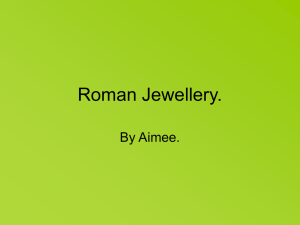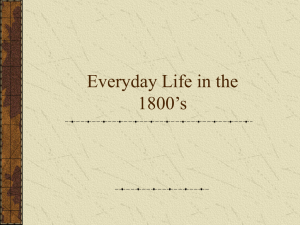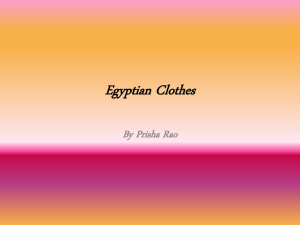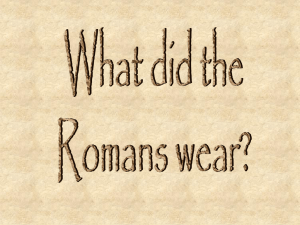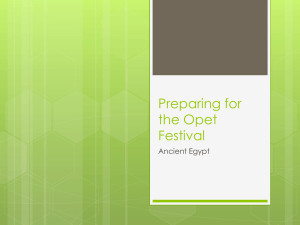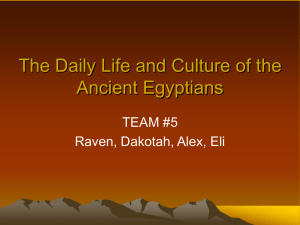Clothing and Adornment-Egypt - WLPCS Middle School
advertisement
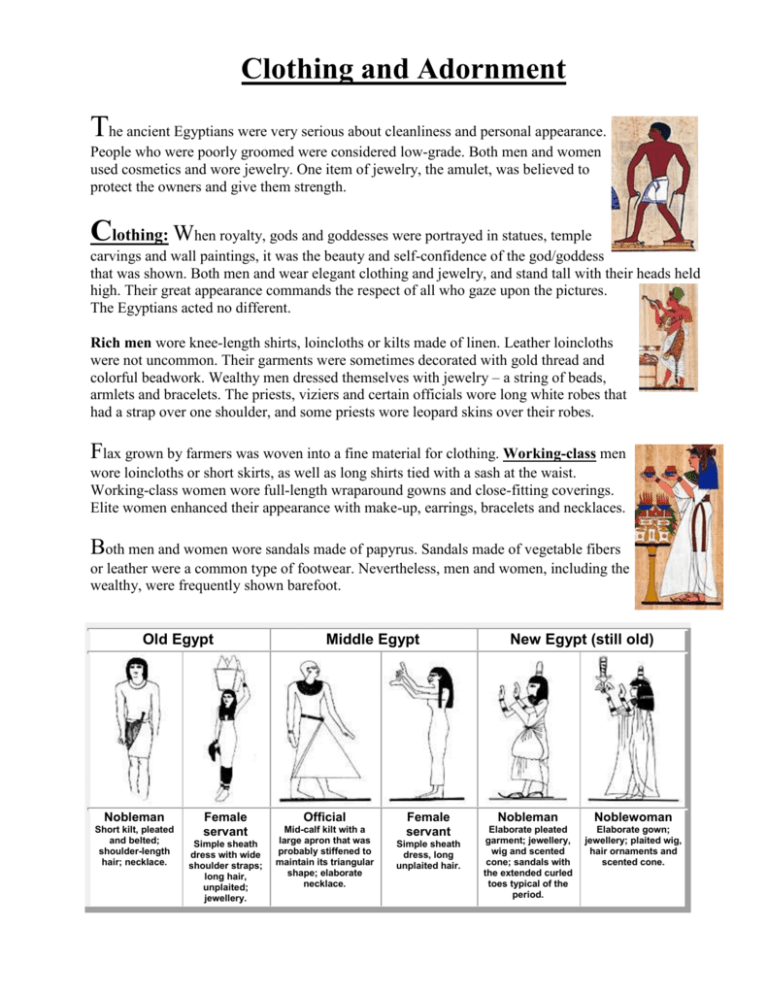
Clothing and Adornment The ancient Egyptians were very serious about cleanliness and personal appearance. People who were poorly groomed were considered low-grade. Both men and women used cosmetics and wore jewelry. One item of jewelry, the amulet, was believed to protect the owners and give them strength. Clothing: When royalty, gods and goddesses were portrayed in statues, temple carvings and wall paintings, it was the beauty and self-confidence of the god/goddess that was shown. Both men and wear elegant clothing and jewelry, and stand tall with their heads held high. Their great appearance commands the respect of all who gaze upon the pictures. The Egyptians acted no different. Rich men wore knee-length shirts, loincloths or kilts made of linen. Leather loincloths were not uncommon. Their garments were sometimes decorated with gold thread and colorful beadwork. Wealthy men dressed themselves with jewelry – a string of beads, armlets and bracelets. The priests, viziers and certain officials wore long white robes that had a strap over one shoulder, and some priests wore leopard skins over their robes. Flax grown by farmers was woven into a fine material for clothing. Working-class men wore loincloths or short skirts, as well as long shirts tied with a sash at the waist. Working-class women wore full-length wraparound gowns and close-fitting coverings. Elite women enhanced their appearance with make-up, earrings, bracelets and necklaces. Both men and women wore sandals made of papyrus. Sandals made of vegetable fibers or leather were a common type of footwear. Nevertheless, men and women, including the wealthy, were frequently shown barefoot. Old Egypt Nobleman Short kilt, pleated and belted; shoulder-length hair; necklace. Female servant Simple sheath dress with wide shoulder straps; long hair, unplaited; jewellery. Middle Egypt Official Mid-calf kilt with a large apron that was probably stiffened to maintain its triangular shape; elaborate necklace. Female servant Simple sheath dress, long unplaited hair. New Egypt (still old) Nobleman Noblewoman Elaborate pleated garment; jewellery, wig and scented cone; sandals with the extended curled toes typical of the period. Elaborate gown; jewellery; plaited wig, hair ornaments and scented cone. Hairstyles: The rich Egyptians hired hairdressers and took great care of their hair. Hair was washed and scented, and sometimes lightened with dye. Children had their heads shaved, except for one or two locks of hair at the side of the head. This was called the “sidelock” of youth, a style worn by the god Horus when he was an infant. Both men and women sometimes wore hairpieces, but wigs were more common. Wigs were made from human hair and had vegetable-fiber padding on the underside. Arranged into careful plaits and strands, they were often long and heavy. They may have been worn primarily at festive and ceremonial occasions. Priests shaved their heads and bodies to affirm their devotion to the gods and to reinforce their cleanliness, a sign of being clean. Make-up: Elite men and women enhanced their appearance with various cosmetics: oils, perfumes, and eye and facial paints. Both sexes wore eye make-up, most often outlining their eyelids with a line of black kohl. When putting on make-up, they used a mirror, as we do today. The Egyptians used mineral pigments to produce make-up. Eye paint emphasized the eyes and protected them from the bright sunlight. During the Old Kingdom, powdered green malachite was brushed under the eyes. Rouge to color the face and lips was made from red ochre. Oils and fats were applied to the skin to protect it, mixed into perfumes, and added to the incense cones worn on top of the head. Both men and women wore perfume cones on their heads. Jewelry: From the earliest times, jewelry was worn by the elite for social status. Bracelets, rings, earrings, necklaces, pins, belt buckles and amulets were made from gold and silver and had precious stones such as lapis lazuli, turquoise, carnelian and amethyst. Egyptian Jewelry was created to show religious things: images of the gods and goddesses; hieroglyphic symbols; and birds, animals and insects that played a role in the creation myth. Commonly seen were the scarab; the Eye of Re; lotus and papyrus plants; the vulture and the hawk; the cobra; and symbols such as the Isis knot, and the ankh (symbol of life). A person's jewelry was placed in his or her grave to be used in the afterworld, along with many other personal items.
